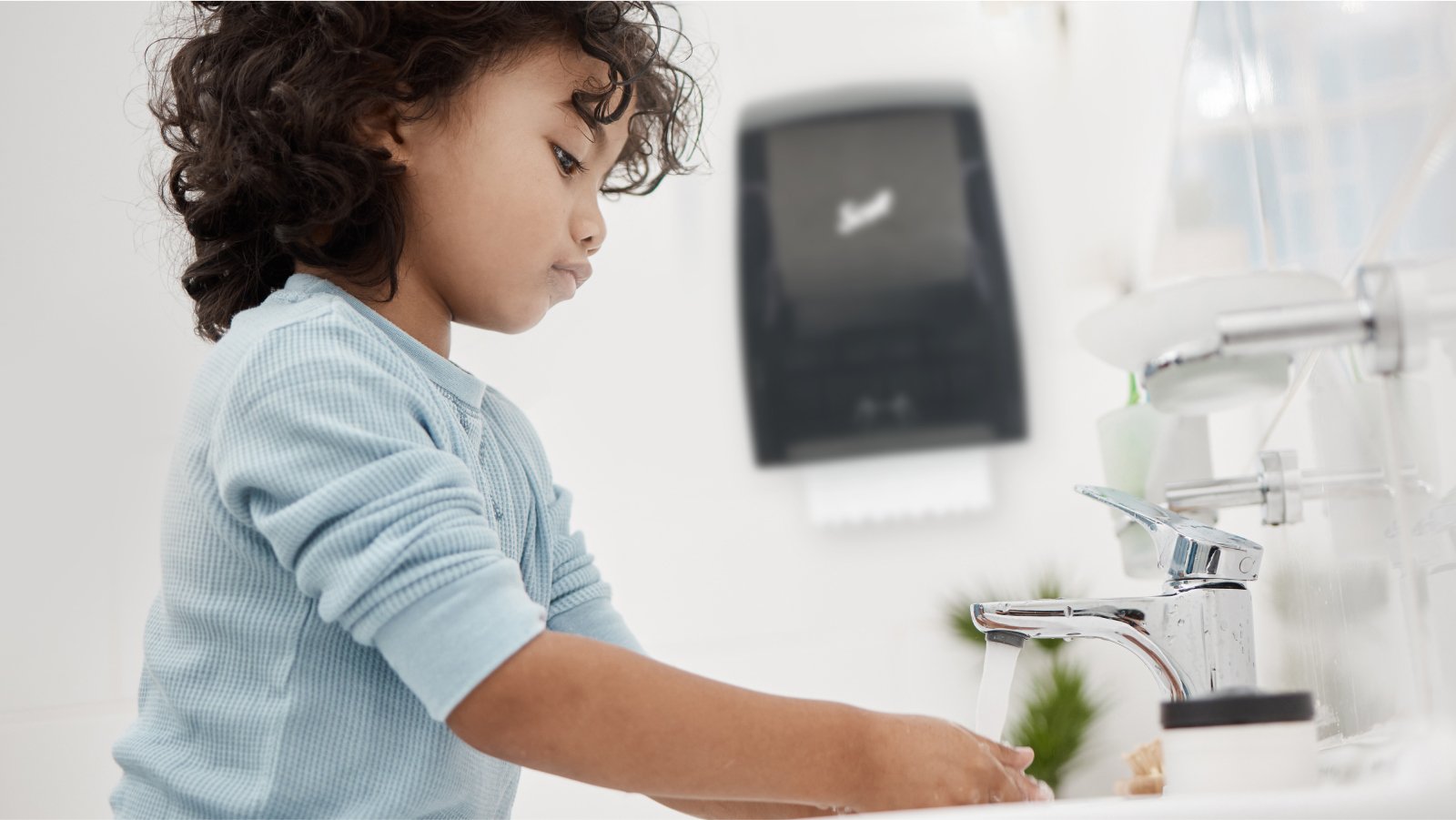Last Updated SEPTEMBER 2021
Learning from Australia’s Office Reopening Experience
As office tenants return to in-person work, facility professionals are sure to receive an influx of questions. Keeping this in mind, we got in touch with our colleagues in Australia to learn about their previous office re-entry experience, what they enjoyed and where they see room for improvement.

Across North America, offices have sat semi-vacant as companies have adopted a virtual work model utilizing phone, email, chat and web conferencing. As tenants make their much-awaited return to the office, facility professionals are sure to receive an influx of questions. Fortunately, some of those questions can be answered by our Kimberly-Clark Professional counterparts in Australia.
Thanks to a lower infection rate, Australian offices followed a different reopening timeline than those in North America. After an initial lockdown, some employees in Australia returned to the office as early as May 2020. Although they had to adjust for additional lockdowns as new variants came along, our Australian offices gave us a sneak peek into how successful a hybrid workplace can be. For much of this past year, buildings resumed operations in a way that made tenants feel safe and protected at work.
With all this in mind, we got in touch with our colleagues in Australia to learn about their office re-entry experience, what they enjoyed and where they see room for improvement.
1. Put Safety First
We asked what workers expected building management to do to support their safe return. Nearly everyone was expecting increased building cleaning and social distancing. A few also mentioned increased accessibility to key items such as hand sanitizer. What made a bigger difference for our Australian co-workers, however, were the efforts that went beyond these familiar rules. Several respondents voiced their appreciation for the QR code check-in system that allows their office to track visitors, for example.
2. Don’t Forget About Enforcement
Even with stringent safety measures in place, some individuals still expressed their concerns around how guidelines would be enforced. During re-opening, you may need to decide how you’ll monitor common areas and conference rooms for things like masking and social distancing. Will you change your maximum capacity for meeting rooms and elevators? Or will you put tenants themselves in charge of enforcement?
3. Embrace In-Person Efficiency
Getting in contact with Australia employees helped us further establish that people value in-person work and collaboration. We should note that every individual we surveyed had gone back to the office for at least some amount of time. Plus, some business functions are just better done face-to-face, such as sensitive negotiations or employee performance reviews.
One respondent explained, “I find working with teammates at the office more productive… you can build relationships, bounce around ideas and ask for answers much quicker.”
4. Prioritize Social Interaction
Speaking of building relationships, many surveyed individuals were thrilled to have opportunities for casual, in-office socializing. They felt excited to see people during breaks and passing by in the hallway. When pressed on what they’d like to see building managers doing more of, many stated that they’d like more on-site social events.
5. Rethink the 9 to 5
Almost everyone agreed that additional flexibility has been a positive change. To keep this going, it’s important to acknowledge that schedules can be unpredictable. One virtual workday per week is enough for some while others may prefer three or four. A good solution for the Australian office has been a new desk reservation program. Best of all, occupants can use the time they save by skipping their commute for mood-boosting activities like exercising and being with family.
As we welcome back tenants in other parts of the world, we must keep in mind that every region is unique. With information changing every day, the choices you make as a facilities leader should always take local infection rate data and government recommendations into account. You may also want to keep in mind the square footage you have available and the technology you have in place to support a mix of on- and off-site workers.
Get more tips for future-proofing your workplace in our limited newsletter series, The Work Ahead.
Related Products:
- Onvation™ Smart Restroom Solution - kcprofessional.com/onvation





















